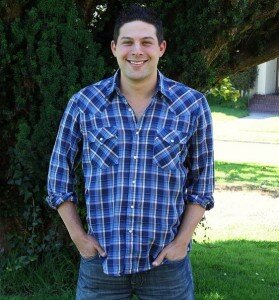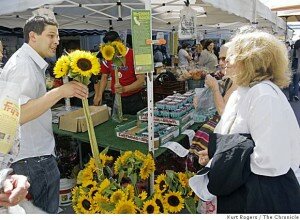 by Sheila Weinberger Cope, Social Media Volunteer, Hands On Nashville
by Sheila Weinberger Cope, Social Media Volunteer, Hands On Nashville
For me, what is most memorable about the May 1st flood in Nashville is the text message I received from HandsOn Nashville on the night of May 2nd.
The message let me know that HandsOn Nashville was officially in emergency management mode. We all needed to act and act fast.
When that message arrived, I was on a gurney in an emergency room with what turned out to be one nasty case of pneumonia.
 My situation didn’t matter. I tweeted and I posted about the disaster right then and there all the while with nurses doing their thing to ensure that I could breathe again.
My situation didn’t matter. I tweeted and I posted about the disaster right then and there all the while with nurses doing their thing to ensure that I could breathe again.
With those tweets and posts, I put out the call for volunteers, tried to soothe frayed nerves and give hope to those who had none.
Even as sick as I was, my adrenalin kicked in and I became determined to do any and everything I could to help the city and organization that I love absolutely.
Before volunteering to do social media work for Hands On Nashville, I was, in a way, lost.
Early in my career, I was a publicist, a journalist and a photographer in New York City.
I went on to practice law and led intellectual property litigation if Silicon Valley.
Most recently, I opened and ran a yarn store that was, incidentally, very successful.
I sold the yarn store in the summer 2007
It was right after selling the shop that when my life changed completely.
In January of 2008, I was diagnosed with MS.
In response to the news, I floundered, grieved and struggled with what having MS would do to the rest of my life.
Always having been an active, go-getting, afraid of nothing, overachiever, I suddenly felt like MS took all of that away from me.
Last winter, when I saw that Hands On Nashville was looking for a social networker, I jumped at the chance.
Here was something I could do from home (my feet are totally numb so I’m not allowed to drive anymore) and something I hoped would finally give my life a purpose again.
I responded to HON’s search for (and I am quoting!) “a social networking guru” willing to devote four hours a week to posting and tweeting on their behalf.
After I signed up, I went home and then worried whether I could really do it and do it well.
Trust me when I say that in my wildest dreams, I could never have conceived of what this “little” project would become.
If I had, it probably would have scared me to death and sent me running to bury my head in the sand. But luckily, managing Hands On Nashville’s social media efforts has turned out to be my favorite volunteer project that I have ever participated in.
(And being over 40, that’s really saying something!)
I. LOVE. WHAT. I. DO.
I love it because I get to work so closely with nine of my heroes.
Those nine heroes are the people that run Hands On Nashville.
Of those nine, only four are actually full time employees.
It boggles my mind and leaves me awestruck at the end of every day.
If anyone is worthy of being a hero, it’s those nine good people.
Another reason I love what I do is because from where I sit, I get to see the big picture and the small ones too.
Whatever cynicism I had on May 1st, when the Nashville flooding started, is all gone now.
Watching, reading and hearing so many stories from so many amazing, kind, generous, unselfish, enthusiastic and devoted people has been an incredible experience.
The wonderful people of Nashville give me overwhelming hope.
They restore my faith in humanity.
They make me more proud than ever to be Nashville born and bred.
I am truly blessed beyond measure.
No words could sufficiently express my gratitude to Hands On Nashville, to volunteers from everywhere and to the 25,255 online fans and followers.
My focus now is to keep the disaster response momentum going even though life seems to be getting back to normal and enthusiasm understandably starts to wane.
It’s a challenge but I think I’m going the right direction.
I believe I‘ve landed where I was meant to be, doing what I was meant to do.
This project has restored me.
I’m finally ready to go back to living my life without letting my MS limit me.
My friends keep telling me how wonderful it is to have “me” back.
Sheila Weinberger Cope will be recognized at the 2010 National Conference on Volunteering and Service as today’s Daily Point of Light Award winner. Neil Bush, Chairman of the Points of Light Institute Board of Directors will present her award at a HandsOn Network Affiliate luncheon. Her award will be accepted on her behalf by Brian Williams, Executive Director of Hands On Nashville.
In the 58 days since the disaster, Hands On Nashville has recruited 16,422 volunteers to serve in 925 project sites and contributed 67,857 volunteer hours to flood relief and recovery efforts. Their extraordinary social media campaign, led by Sheila, has helped galvanize 25,000 plus on-line fans.
 by Jen Martin, Senior Specialist, Office of Volunteer and Civic Engagement, AARP
by Jen Martin, Senior Specialist, Office of Volunteer and Civic Engagement, AARP![CTG_red[1]](../wp-content/uploads/2010/10/CTG_red1-150x150.jpg) Nationwide, AARP and AARP Foundation are launching anti-hunger initiatives including volunteer-led food drives Create The Good and Comparti es Vivir, a major fundraising campaign, new online hunger resources and information at www.aarp.org/hunger and — and local SNAP outreach and assistance.
Nationwide, AARP and AARP Foundation are launching anti-hunger initiatives including volunteer-led food drives Create The Good and Comparti es Vivir, a major fundraising campaign, new online hunger resources and information at www.aarp.org/hunger and — and local SNAP outreach and assistance.


 In our session today, we hope to gather the collective wisdom of those in the room to create a more complete list, but as we head in to our workshop, I’ve outlined a few of our ideas for applying the best practices of traditional volunteer management to distributed action in the social space.
In our session today, we hope to gather the collective wisdom of those in the room to create a more complete list, but as we head in to our workshop, I’ve outlined a few of our ideas for applying the best practices of traditional volunteer management to distributed action in the social space. Make folks feel part of something larger than themselves – all of us want to find meaning in our lives. You’re not just asking for help, you’re offering people an opportunity to contribute, to participate in making a difference. Let this help you overcome your fear that you’re burdening folks with your request.
Make folks feel part of something larger than themselves – all of us want to find meaning in our lives. You’re not just asking for help, you’re offering people an opportunity to contribute, to participate in making a difference. Let this help you overcome your fear that you’re burdening folks with your request. Make it easy – remember volunteers have to be eased into a commitment. Make it quick and easy to take immediate action, ask for specific actions and small commitments first and work up to larger commitments.
Make it easy – remember volunteers have to be eased into a commitment. Make it quick and easy to take immediate action, ask for specific actions and small commitments first and work up to larger commitments.






 by Sheila Weinberger Cope, Social Media Volunteer, Hands On Nashville
by Sheila Weinberger Cope, Social Media Volunteer, Hands On Nashville

 by Jared Paul, Founder,
by Jared Paul, Founder,  Upon hearing about the conference, I started thinking about creative “Goods Ideas” that AGI could host that would shake things up a bit in NYC.
Upon hearing about the conference, I started thinking about creative “Goods Ideas” that AGI could host that would shake things up a bit in NYC.

 Social Media 4 Social Good: A Social Media Fair
Social Media 4 Social Good: A Social Media Fair
 Twitter 201
Twitter 201

